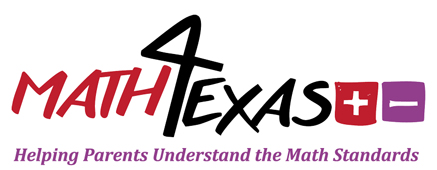T.i.P.S.
-
 Students must use their prior knowledge from sixth grade where students represented ratios and percents with concrete models, fractions, and decimals, represented benchmark fractions and percents such as 1%, 10%, 25%, 33% and multiples of these values using 10 by 10 grids, strip diagrams, number lines, and numbers, generated equivalent forms of fractions, decimals, and percents using real-world problems, including problems that involve money. In sixth grade, students also solved real-world problems to find the whole given a part and the percent, to find the part given the whole and the percent, and to find the percent when given the part and the whole, including the use of concrete and pictorial models, and used equivalent fractions, decimals, and percents to show equal parts of the same whole.Students may solve problems involving rates, ratios, percent increase, percent decrease, and financial literacy problems involving tax, tip, principle, simple and compound interest, commission, markup, markdown, appreciation, and depreciation. These problems may also include percent bars, hundredths grid, strip diagram, number line, scale factors between ratios, and equivalent representations of ratios, rates, and percents.
Students must use their prior knowledge from sixth grade where students represented ratios and percents with concrete models, fractions, and decimals, represented benchmark fractions and percents such as 1%, 10%, 25%, 33% and multiples of these values using 10 by 10 grids, strip diagrams, number lines, and numbers, generated equivalent forms of fractions, decimals, and percents using real-world problems, including problems that involve money. In sixth grade, students also solved real-world problems to find the whole given a part and the percent, to find the part given the whole and the percent, and to find the percent when given the part and the whole, including the use of concrete and pictorial models, and used equivalent fractions, decimals, and percents to show equal parts of the same whole.Students may solve problems involving rates, ratios, percent increase, percent decrease, and financial literacy problems involving tax, tip, principle, simple and compound interest, commission, markup, markdown, appreciation, and depreciation. These problems may also include percent bars, hundredths grid, strip diagram, number line, scale factors between ratios, and equivalent representations of ratios, rates, and percents.
Example
-
Amy's family has a Texas Red Lacy named Hank. The amount of food Hank eats each week increased from 48 lbs. to 54 lbs. What percentage did Hank increase the amount of food he eats?
Hint
Possible Solutions
Digital Tools
-
Click on the following links for interactive games.
Resources
-
Click on the following links for more information.
TEKS
-
Readiness Standard
7.4 Proportionality. The student applies mathematical process standards to represent and solve problems involving proportional relationships. The student is expected to:
(D) solve problems involving ratios, rates, and percents, including multi-step problems involving percent increase and percent decrease, and financial literacy problems





 Click
Click 

